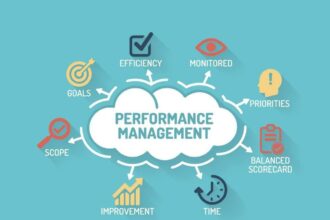
Today, it can feel like we’re reaching peak “automation” – it’s starting to seem like an ever-present buzzword. Of course, automating business processes can deliver very real benefits for organizations. But as with any process improvement, custom software must be applied appropriately, with an eye toward both your goals and the context in which you’re pursuing them. And sometimes, automation isn’t the right approach at all.

Today, it can feel like we’re reaching peak “automation” – it’s starting to seem like an ever-present buzzword. Of course, automating business processes can deliver very real benefits for organizations. But as with any process improvement, custom software must be applied appropriately, with an eye toward both your goals and the context in which you’re pursuing them. And sometimes, automation isn’t the right approach at all.
As you set out to improve your business processes, you’ll generally encounter one of two types of tasks:
1) Work best-suited to a human.
These tasks might require complex and extemporaneous decision-making, along with a high degree of adaptability.
2) Work best-suited to a computer.
These tasks typically call for repetitive, in-depth calculations with a limited and fairly consistent set of variables.
Custom software can be a game-changing solution for many organizations, but you can’t just throw applications at a business process problem and expect it to go away. One great benefit of custom software is that it can be precisely and thoughtfully applied to your specific organization’s specific problem, balancing technological and human resources appropriately to achieve more efficient, harmonious processes.
Finding and Addressing Misalignments
There are a lot of ways misalignments of resources can crop up in your business processes. One, as we’ve discussed, is to apply computer-oriented tasks to your employees, and vice versa.
Another might be using the wrong tools for a given job, either out of habit or because the organization wasn’t aware that they had other options. They might manage customer relationships and engagements through email and calendar software rather than a Customer Relationship Management (CRM) system, for example, or conducting project management through paper forms.
How do you find these areas of misalignment? One effective way to start is to ask your organization’s employees. Inquire after their process-related pain points, tasks that seem avoidably tedious or problematic.
Also search for tasks in which your current tools may be determining your processes, rather than the other way around. By tackling these areas, you’ll have made a strong start. But there are a couple more issues you’ll want to consider as you strategize for a custom software solution.
Improved Data Entry and Utilization
A key step in improving any data-related process is to reduce quality issues where possible. By using custom software to collect data, you can often avoid errors while facilitating a process that is much more efficient than manual data entry. Better yet, custom software can validate the data you collect automatically, giving your organization swifter access to high-quality, validated information.
Often, human-driven data collection is subject to error and quality issues, in addition to being slow and tedious. With custom software, you can effectively automate data validation and often the data collection itself, resulting in much cleaner and (due to the increased speed of processing) more up-to-date information. By leveraging the capabilities of mobile devices, it is possible to collect a wide range of data, from barcodes to audio/visual recordings to GPS data.
There’s another crucial advantage of collecting high-quality data efficiently. While custom software helps you coordinate your processes, it can also collect data on your processes themselves – and analyze that data to find new opportunities for process improvements. By applying analytics to your process data, you can measure your outcomes more effectively and take a scientific approach to improvement.
Process improvement is never simple – it requires thoughtful, tailored application of custom software solutions to your specific challenges. But the organizations that utilize software to improve will find themselves with a decisive advantage, one that will serve them for years.
To learn how custom software can solve your organization’s unique challenges, check out Art & Logic’s Complete Guide to Developing Custom Software for any Business Challenge.








